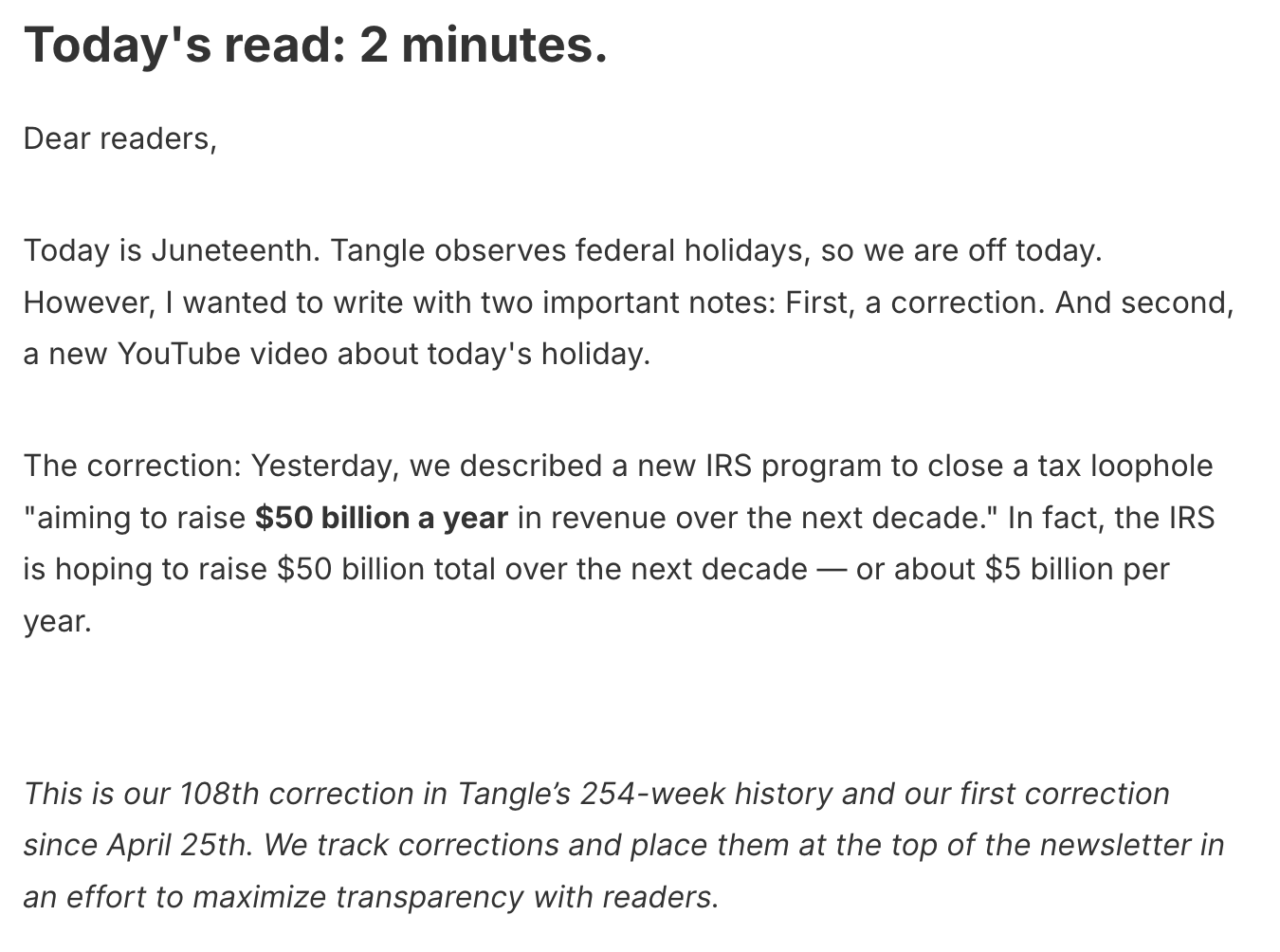
Recently a journalist asked for advice on how they could’ve handled what they deemed a pretty major correction for their news outlet. The journalist had quickly corrected the mistake, but they were curious about best practices for being transparent in alerting their audience to the correction. Specifically, since the mistake was corrected quickly, how obvious […]
Be loud about mistakes — and how you correct them
Recently a journalist asked for advice on how they could’ve handled what they deemed a pretty major correction for their news outlet.
The journalist had quickly corrected the mistake, but they were curious about best practices for being transparent in alerting their audience to the correction. Specifically, since the mistake was corrected quickly, how obvious should they make it that the story included a correction? And if they made the correction too prominent, would it hurt their newsroom’s credibility?
As journalists, we never want to make mistakes. But of course, we’re human and we do, indeed, mess up. It can increase our trustworthiness and relatability if we talk about that more directly.
People don’t think journalists care about getting it right. Research shows fewer than half of U.S. adults say journalists admit and take responsibility for their mistakes at least some of the time. People with low trust in the news (including people who lean right politically) also cite a lack of faith in news outlets’ accuracy and the perception that journalists don’t own up to their errors as part of the problem.
Every journalist I’ve worked with has been on board with correcting reporting mistakes. But the way journalists handle corrections doesn’t always make that obvious.
It’s usually hard to find a correction (or any transparency elements at that) in a story because — if they’re present at all — they so often get buried at the very bottom of a story, or they’re just quickly mentioned at the end of an on-air segment.
Here’s why this matters right now: We’re in the middle a high-stakes election season full of what feels like nonstop breaking news — and breaking news tends to be where reporting mistakes happen most often.
With polarization in the country feeling so high, and trust in journalism being so low, if mistakes and corrections aren’t handled carefully and honestly, we can perpetuate feelings of distrust and skepticism over journalists’ motives and integrity.
But when handled with humility and accountability, mistakes and corrections can actually build empathy, trust and rapport with your audience.
Here are two newsroom examples that highlight how this can work.
1. How Tangle highlights corrections
Tangle, which describes itself as a non-partisan political newsletter, regularly shares corrections at the very top of the newsletter and also numbers the corrections.
The founder, Isaac Saul, is extremely transparent about how the errors happen in a way that feels both conversational and authentic. He explains the error, and what was corrected, and then ties it back to the organization’s mission of transparency.
Here’s an example of a recent correction in the newsletter and what that looks like.

His posture toward embracing humility when he gets something wrong and using it as an opportunity to build trust is admirable, and it goes beyond factual errors. Take a look at his “Three things I was wrong about” post, which is a general acknowledgment of times he felt he missed the mark in his analysis. That sort of accountability can go a long way with hyper-skeptical audiences.
“A big reason why I’ve gotten better at looking critically at my own work — and better at openly admitting when I’m off base — is that audiences (like you) have shown that you genuinely value transparency and honestly a lot more than you do someone who always tried to prove they are right,” Saul writes.
And clearly, he’s right that something about this approach is resonating with people: Saul recently announced that the startup broke $1 million in annual recurring subscription revenue..
2. How Ground News explains mistakes
The industry’s standard format for corrections includes the corrected information with little to no explanation of why it happened in the first place. That can lead to assumptions that you’re not careful with your reporting, or that you quickly reshare information that aligns with your point of view without thoroughly fact-checking it first.
That’s why we’re fans of how Ground News used an Instagram post to explain a major correction after the outlet reposted a headline about Tucker Carlson that was later deemed to be false. Instead of just removing the post from their website and social media, as so many outlets typically do, they explained how the mistake happened. They used it as an opportunity to talk about their reporting and aggregation process and how they try to avoid this.
“We recognize that we are a trusted source of news for many and need to hold ourselves accountable when we get it wrong,” the Instagram post reads.

The comment section clearly shows just how much people appreciated that the organization handled it directly and took responsibility.

Start with a policy and establish best practices
Perhaps not every correction is worthy of an Instagram post. Every correction will be different, and how each newsroom handles corrections will be different, too.
But we encourage journalists and newsrooms to be thoughtful about corrections, how they appear, how audiences find them, and how consistently things are corrected. And we encourage you to see mistakes as an opportunity to build, not lose, trust.
We outline different suggestions and strategies in our Corrections Trust Kit. It also includes a checklist of what to include in a corrections policy and has a lot of newsroom examples of how real newsrooms are getting transparent about corrections.
At Trusting News, we learn how people decide what news to trust and turn that knowledge into actionable strategies for journalists. We train and empower journalists to take responsibility for demonstrating credibility and actively earning trust through transparency and engagement. Learn more about our work, vision and team. Subscribe to our Trust Tips newsletter. Follow us on Twitter and LinkedIn.

Project manager Mollie Muchna (she/her) has spent the last 10 years working in audience and engagement journalism in local newsrooms across the Southwest. She lives in Tucson, Arizona, where she is also an adjunct professor at the University of Arizona’s School of Journalism. She can be reached at mollie@trustingnews.org and on Twitter @molliemuchna.



